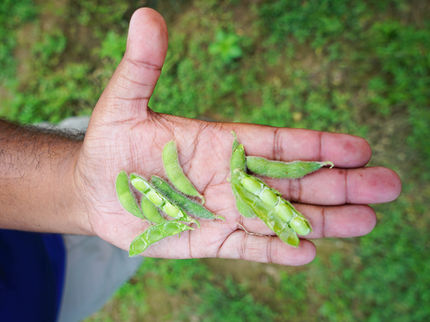Uncovering the Sweet Secrets of Snacks
Valentine’s Day is just around the corner, which means it’s time to buy chocolates and candies for that someone special. Or perhaps, you prefer healthier treats, in the form of fresh or dried fruits. Below are some recent papers published in ACS journals that investigate the complex way chocolate melts in the mouth, how Turkish delights are delightfully chewy and the best way to dry sweet cherries.

symbolic picture
computer generated pictures
- Valorization of Sweet Cherries (Prunus avium) Using Different Drying Methods for Obtaining a Healthy Dried Product
ACS Food Science & Technology Jan. 20, 2023
Chile is a major grower of sweet cherries, yet despite producing more than 445,000 tons of the fruit last year, around 17% failed to meet export standards. One way to add value to discarded cherries is to dry them. The researchers investigated several drying methods and found that drying them in the sun, the most common method, was detrimental to these compounds’ antioxidant potential. The best method was convective drying at around 150 F. - Insights into the Multiscale Lubrication Mechanism of Edible Phase Change Materials
ACS Applied Materials & Interfaces Jan. 12, 2023
The silky-smooth way a piece of chocolate melts in your mouth is not very well understood, scientifically speaking. To figure it out, these researchers built their own realistic tongue and novel tribomicroscopy technique. They found that fats in chocolate form tiny emulsion droplets that coalesce into a layer of film, leading to that “coating” feeling on the tongue. This knowledge could help create lower-calorie dark chocolates that still have good mouthfeel. - Effect of Different Syrup Types on Turkish Delights (Lokum): A TD-NMR Relaxometry Study
ACS Food Science & Technology Nov. 30, 2022
Turkish delights are chewy candies cut into delicate cubes and dusted with powdered sugar. Alternatives sometimes use corn syrups or sweeteners instead of sugar, but do they hold up to the original? Here, scientists used time-domain NMR spectroscopy to investigate the crystallinity in candies made using sugar, corn syrup or allulose. They found that the low-calorie allulose candies were too soft and had difficulty holding their shape, whereas the corn syrup candies were firm and had an appealing color.
The American Chemical Society (ACS) is a nonprofit organization chartered by the U.S. Congress. ACS’ mission is to advance the broader chemistry enterprise and its practitioners for the benefit of Earth and all its people. The Society is a global leader in promoting excellence in science education and providing access to chemistry-related information and research through its multiple research solutions, peer-reviewed journals, scientific conferences, eBooks and weekly news periodical Chemical & Engineering News. ACS journals are among the most cited, most trusted and most read within the scientific literature; however, ACS itself does not conduct chemical research. As a leader in scientific information solutions, its CAS division partners with global innovators to accelerate breakthroughs by curating, connecting and analyzing the world’s scientific knowledge. ACS’ main offices are in Washington, D.C., and Columbus, Ohio.
Original publication
ACS Food Sci. Technol. 2023 | Valorization of Sweet Cherries (Prunus avium) Using Different Drying Methods for Obtaining a Healthy Dried Product | January 20, 2023
ACS Food Sci. Technol. 2023 | Insights into the Multiscale Lubrication Mechanism of Edible Phase Change Materials | January 12, 2023
ACS Food Sci. Technol. 2022 | Effect of Different Syrup Types on Turkish Delights (Lokum): A TD-NMR Relaxometry Study | November 30, 2022
Most read news
Original publication
ACS Food Sci. Technol. 2023 | Valorization of Sweet Cherries (Prunus avium) Using Different Drying Methods for Obtaining a Healthy Dried Product | January 20, 2023
ACS Food Sci. Technol. 2023 | Insights into the Multiscale Lubrication Mechanism of Edible Phase Change Materials | January 12, 2023
ACS Food Sci. Technol. 2022 | Effect of Different Syrup Types on Turkish Delights (Lokum): A TD-NMR Relaxometry Study | November 30, 2022
Topics
Organizations
Other news from the department science

Get the food & beverage industry in your inbox
By submitting this form you agree that LUMITOS AG will send you the newsletter(s) selected above by email. Your data will not be passed on to third parties. Your data will be stored and processed in accordance with our data protection regulations. LUMITOS may contact you by email for the purpose of advertising or market and opinion surveys. You can revoke your consent at any time without giving reasons to LUMITOS AG, Ernst-Augustin-Str. 2, 12489 Berlin, Germany or by e-mail at revoke@lumitos.com with effect for the future. In addition, each email contains a link to unsubscribe from the corresponding newsletter.



























































